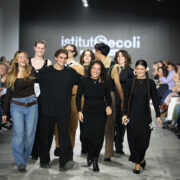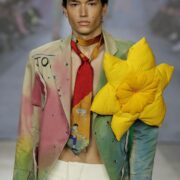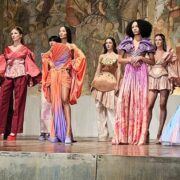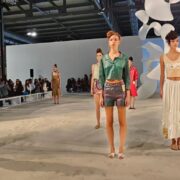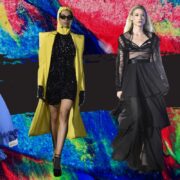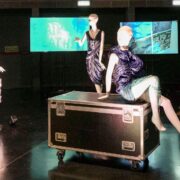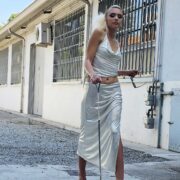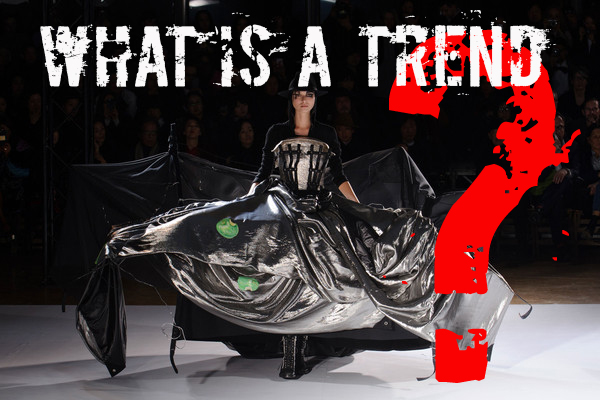
(ENGLISH VERSION BELOW)
Esso nasce dal bisogno, insito nel capriccioso e perennemente insoddisfatto animo umano, di creare una continua dialettica tra quello che esiste nella realtà e quello che vorremmo avere intorno a noi. La tendenza indica i desideri più o meno espressi dell’umanità, quello che ancora la gente (parafrasando una celebre frase di Diana Vreeland) non sa di volere.
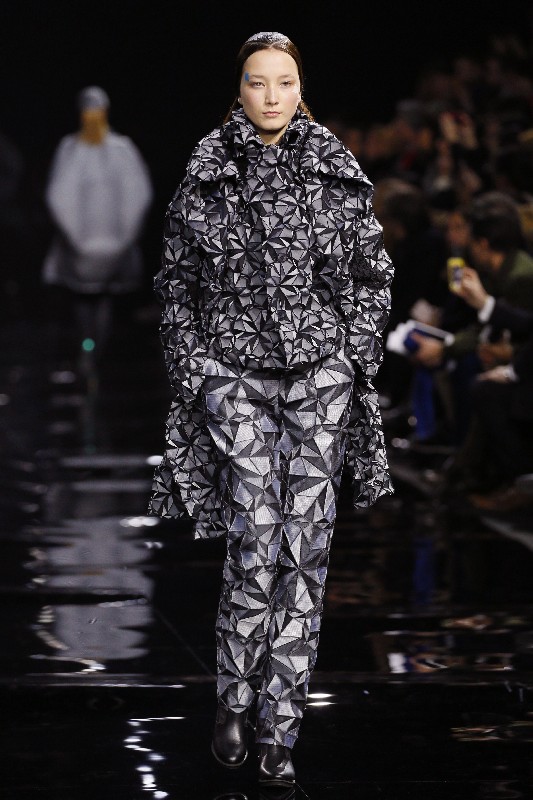 |
| Issey Miyake |
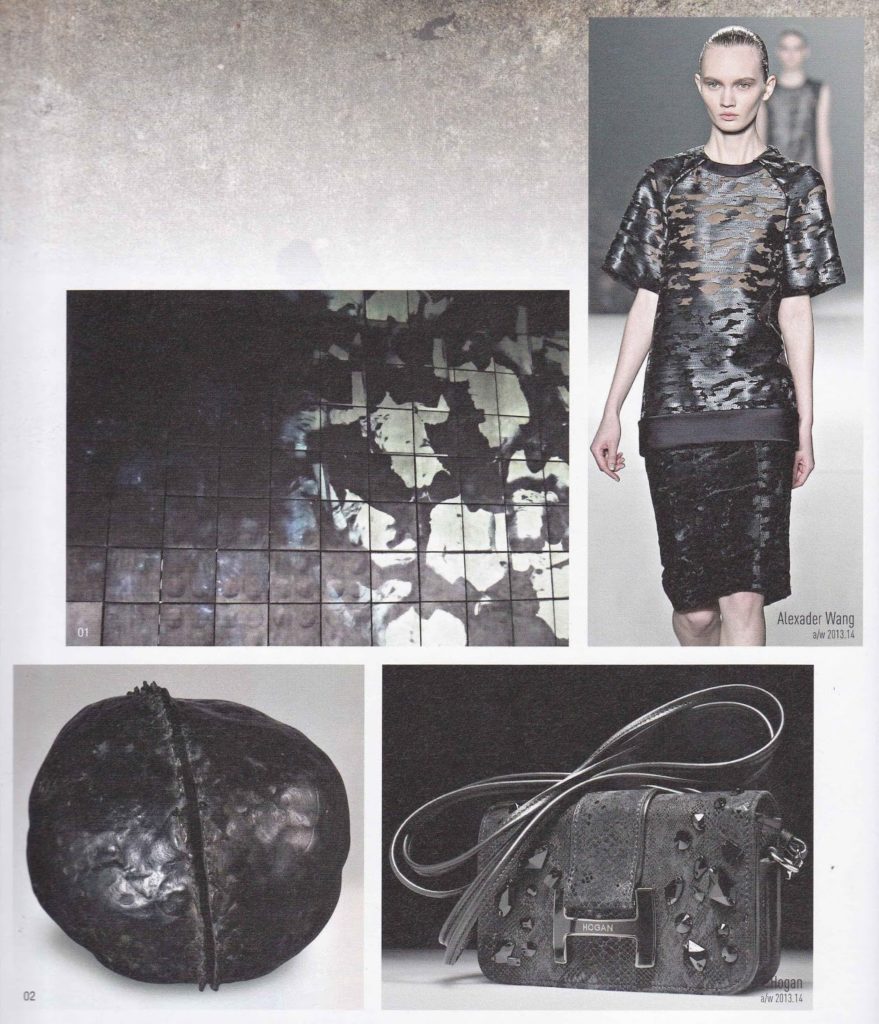 |
| Immagine concettuale che esprime la tendenza “Ferroso” tratta dalla rivista specializzata “Zoom on Fashion Trends” per l’autunno/inverno 2015-16 |
 |
| Rick Owens |
Ma come nasce un trend? E per quale motivo stilisti differenti si trovano a seguire determinate direttive?
Tutto nasce molto più a monte…
Le “trend agencies” si occupano proprio di fornire i propri occhi e le proprie menti a tutti coloro che possono essere interessati a quello che riserverà il futuro. Tra essi troviamo sicuramente gli stilisti, ma, ancora più a monte, le aziende di produzione di tessuti e di filati.
La moda infatti si basa sull’incessante ricerca del bello e del nuovo, ma che deve essere un bello e un nuovo a cui la gente comune sia in qualche modo preparata. Per esprimerci in poche parole, potremmo dire che la moda funziona solo se incarna il segreto desiderio umano. Non riuscire a carpirlo può significare per i produttori fallire e per gli stilisti sbagliare la collezione, con il rischio di apparire obsoleti o fuori contesto.
 |
| John Elliot |
Questo è il motivo per cui esiste la figura del Coolhunter, una sorta di inviato speciale direttamente sul campo (le zone del pianeta più giovani e creative) il quale, insieme alle ricerche di mercato e alle analisi socio-economiche e statistiche operate dalle agenzie di tendenza, riesce a individuare un trend fin dai suoi primordi.
 |
| I tessuti della tendenza “Ferroso” proposti dalla rivista “Zoom on Fashion Trends” per l’autunno/inverno 2015-16 |
Per quel che serve al ragionamento sul termine “trend“, possiamo dire che esso è, come dice la parola stessa, il libro, in formato cartaceo o digitale, che raccoglie immagini, colori e materiali che cercano di esprimere i concetti che possono descrivere al meglio le tendenze future.
Trend means tendency, or the track in a direction that brings us into the future that has to come.
It born from the need, inherent in the capricious and perpetually dissatisfied human soul, to create a continuous dialectic between what exists in reality and what we would like to have around us. The trend is the more or less expressed desires of humanity, what yet the people (to paraphrase a famous phrase of Diana Vreeland) does not know to want.
To look forward we don’t need a crystal ball or Tarot reading, but we need trained eyes to recognize the faint traces of desire and popular will, need expert minds able to gather information and steal ideas, dreams, projects.
The “trend agencies“ involved to provide their own eyes and their minds to those who may be interested in what the future holds. Among them we find certainly designers, but, further upstream, the companies producing fabrics and yarn. The fashion in fact is based on constant search for beauty and new, but it must be a beauty and a new in which ordinary people is somehow prepared.
To express ourselves in a few words, we could say that fashion works only if it embodies the secret human desire. Failing to understand it may mean for producers fail and make mistakes collection for designers, with the risk of being obsolete or out of context.
This is reason there’s the figure of Coolhunter, a kind of special envoy directly on site (areas of the planet most young and creative) who, along with market research and socio-economic analysis and statistics, made by the trend agencies, can identify a trend since its beginnings.
Through the services offered by the trend research, designers and manufacturers will be able to predict what products will fit better to the future needs of customers and to assess in advance, and with a certain safety margin, the success of special fabrics, colors, details and wearability.
Materials and nuances, but also emotions, keywords, visions and concepts, captured around the world by Coolhunter, are presented at trade fairs or directly to manufacturers through the “trend book“, a sort of crystal ball that can to predict future trends even with two or more years in advance. For what we need about reasoning on the term “trend“, we can say that it is, as the name implies, the book in paper or digital format, which contains images, colors and materials that seek to express concepts that can describe in a better way the future trends.
In reality there’s no a unique trend, because this would mean that the world’s people thinks in the same way and wish the same things and the same products. Trends suit different tastes and thus to different styles. But we can be assured that different designers will choose maybe the same color or the same type of fabric for the same season.


